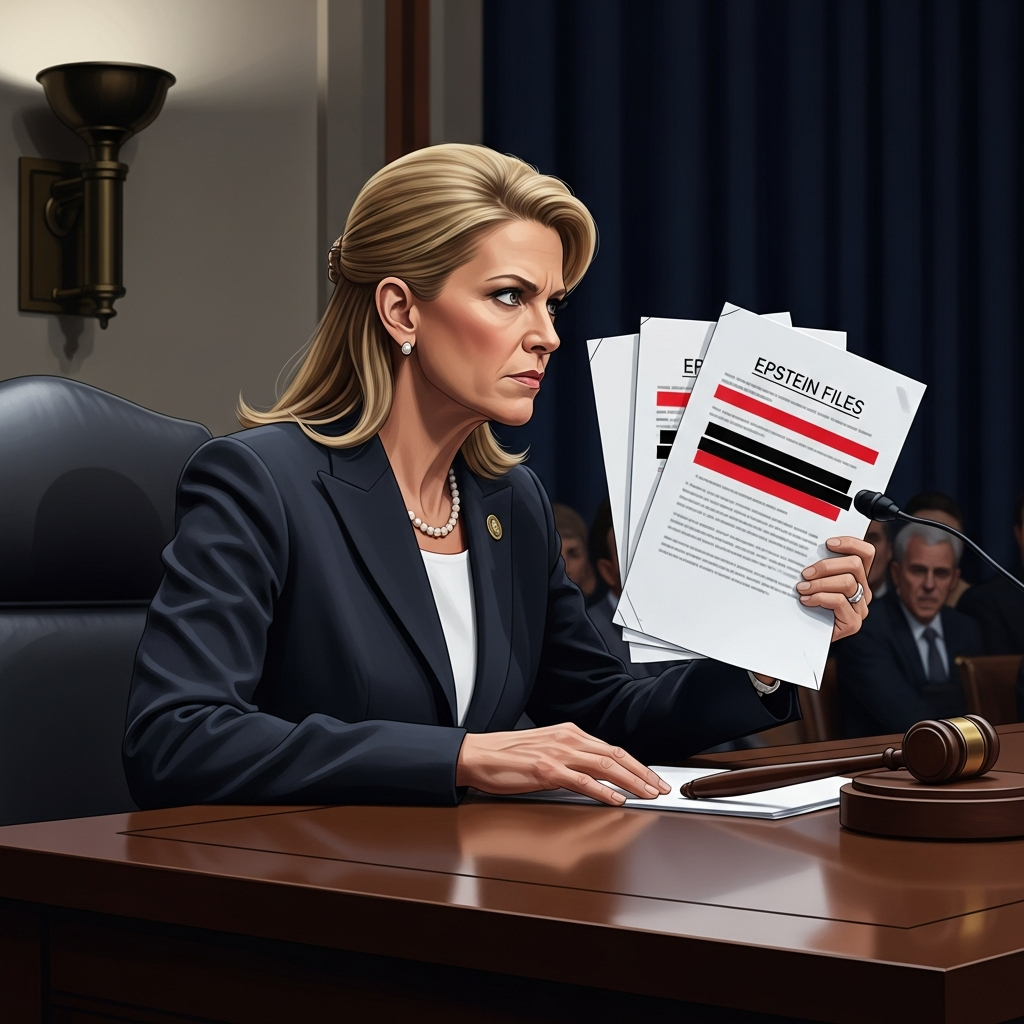Following a contentious vote, a sweeping legislative package dubbed the “One Big Beautiful Bill” has quickly moved from Capitol Hill debates directly onto the campaign trail. Passed narrowly along party lines in early July 2025, this major piece of legislation championed by President Donald Trump is now poised to become a defining issue in the crucial 2026 midterm elections, where control of both the house and Senate hangs in the balance. The political fight is intensifying as republicans and Democrats prepare to leverage the bill’s contents and the opposing votes cast on it to rally their bases and persuade swing voters.
The bill cleared its final hurdle in Congress with minimal room to spare. The Republican-controlled House of Representatives gave its approval in a 218-214 vote, largely split along party lines. Just days earlier, Vice President JD Vance cast a tie-breaking vote in the Senate, securing its passage there with a 51-50 tally. The legislation arrived on President Trump’s desk for signing just ahead of the nation’s 250th-anniversary celebrations, marking a significant legislative victory for his administration and congressional allies.
What’s Inside the “Big Beautiful Bill”?
This comprehensive legislative package is packed with priorities from President Trump’s 2024 campaign trail and second term agenda. The nearly $3.4 trillion bill touches on numerous policy areas, aiming to implement significant changes across the economy and government programs. However, several key components have drawn intense scrutiny and debate.
A major focus is tax policy. The bill includes provisions to make permanent the 2017 tax cuts enacted during President Trump’s first term, which were scheduled to expire later this year. Analyses by groups like the Congressional Budget Office and the Committee for a Responsible Federal Budget project this extension alone could reduce taxes by nearly $4.4 trillion over the next decade. Additionally, the legislation eliminates taxes on tips and overtime pay, a move Republicans highlight as a benefit for working Americans.
Beyond taxes, the “Big Beautiful Bill” directs billions of dollars towards bolstering border security measures. It also codifies some of the administration’s strict immigration crackdown policies into law. This reflects a continued emphasis on border enforcement as a core policy goal.
However, the bill also proposes substantial changes to the nation’s social safety net programs. It significantly restructures Medicaid, the federal health coverage program assisting millions of low-income individuals and families. Reports indicate Senate Republicans pushed for deeper cuts to Medicaid than initially proposed by the House. The legislation also includes reductions to food stamps, another critical program providing assistance to vulnerable populations. These cuts and program changes were reportedly included, at least in part, to help offset the substantial costs of extending the tax cuts. Furthermore, the bill imposes new rules and regulations, including work requirements for many individuals seeking Medicaid coverage. Critics argue these changes could leave millions without essential healthcare access.
Financially, the bill carries a significant price tag regarding the national debt. While proponents point to tax cuts and targeted spending, projections from independent budget watchdogs suggest the package is likely to add approximately $4 trillion to the national debt over the next decade. This fiscal impact is a key point of contention, fueling debates about long-term economic sustainability.
The Campaign Trail Clash Begins
With the legislative battle decided, the focus immediately shifted to the political arena. Both Republicans and Democrats wasted no time framing the “Big Beautiful Bill” as a central issue for the 2026 midterms, where every seat in the House and a significant portion of the Senate will be contested. The opposing votes cast on the bill are now being positioned as litmus tests for voters.
President Trump set the tone quickly, criticizing Democrats for their unanimous opposition. Speaking at a July 4th-eve event, he stated, “Not one Democrat voted for us, and I think we use it in the campaign that’s coming up the midterms, because we’ve got to beat them.” This signals the GOP’s intent to make Democratic opposition a liability.
Republicans Seize on Tax Cuts
Republican leaders and campaign strategists are going on the offensive, portraying Democrats as standing against tax relief for everyday Americans. The National Republican Congressional Committee (NRCC), the campaign arm for House Republicans, swiftly issued a memo claiming, “Every Democrat voted to hurt working families and to protect the status status.” They vowed to make the vote on the bill “the defining issue of 2026,” aiming to pressure vulnerable Democrats.
NRCC Chair Rep. Richard Hudson echoed this sentiment, writing that House Democrats “rejected common sense” by voting against the legislation. He pledged to ensure every Democrat who opposed the bill “has to answer for it” during the upcoming elections. The GOP strategy heavily emphasizes the bill’s tax cutting components, particularly the extension of the 2017 rates and the elimination of taxes on tips and overtime pay. Some Republicans point to polls from GOP-aligned public policy groups, such as one by One Nation, suggesting strong support for the bill specifically because of these tax provisions. Former Sen. Scott Brown, a Republican candidate in a key Senate race, praised the bill for fulfilling promises and supporting individuals and businesses through tax cuts. He also sought to draw distinctions regarding Medicaid eligibility, supporting benefits for those unable to work while questioning coverage for others.
Democrats Condemn Safety Net Cuts
Conversely, Democrats are intensely focused on the bill’s impact on social safety net programs and its projected contribution to the national debt. They universally condemn the legislation as harmful to vulnerable populations and financially irresponsible. The Democratic National Committee (DNC) quickly sent an email to supporters with the stark headline, “BREAKING: House Republicans vote to kick 17 million people off health care,” highlighting the projected impact of Medicaid changes.
House Democratic Leader Hakeem Jeffries publicly charged that “extreme House Republicans just approved the largest cut to Medicaid and food assistance in American history to fund tax breaks for their billionaire donors.” This frames the bill as a transfer of wealth from the poor to the rich. The Democratic Congressional Campaign Committee (DCCC), which works to elect Democrats to the House, pledged to inform “every battleground voter” how Republicans “abandoned them” by passing what they labeled “the most unpopular piece of legislation in modern American history.” DCCC Chair Rep. Suzan DelBene expressed confidence that this would help Democrats regain the House majority. Rep. Chris Pappas, running for a Senate seat, specifically highlighted the bill’s potential consequences for his state, estimating a significant number of residents could lose health insurance and access to food assistance, potentially straining local healthcare systems. Democrats are expected to launch targeted advertising campaigns focusing on the bill’s negative impacts, particularly during the upcoming August congressional break.
Public Opinion: A Divided Picture
Amidst the dueling political narratives, national public opinion polls paint a complex picture of the bill’s popularity. While Republicans highlight support for specific components like tax cuts, multiple surveys conducted in the month prior to the bill’s passage indicated overall negative sentiment.
A Fox News national poll showed 59% of voters opposed the bill compared to 38% who favored it, a net negative of 21 points. Other polls reflected similar sentiment: the Washington Post survey indicated a negative margin of 19 points, Pew Research a negative 20 points, and Quinnipiac University a negative 26 points. These findings suggest a significant hurdle for Republicans seeking to sell the bill to a broad electorate.
The Fox News poll also delved deeper into how voters perceived the bill’s potential impact on their own lives. Nearly half of respondents (49%) believed the legislation would hurt their family, while only 23% thought it would help, and 26% felt it wouldn’t make a difference. Interestingly, even among those who felt they understood the bill well, more believed it would hurt rather than help their families (45% vs. 34%). The surveys consistently revealed a stark partisan divide, with a large majority of Republicans (73% in the Fox News poll) favoring the bill, contrasted with overwhelming opposition from Democrats (89%) and a significant majority of independents (73%). This partisan chasm underscores the challenge for either side to sway voters outside their base solely on the merits of the bill itself.
Defining the 2026 Midterms
The “Big Beautiful Bill” has immediately become a flashpoint, solidifying its place as a central issue for the 2026 congressional elections. With Republicans defending a slim House majority and multiple competitive Senate races on the horizon, both parties see the bill as a critical tool to mobilize voters and attack opponents. Republicans will relentlessly tie Democratic challengers to their vote against tax cuts, hoping to portray them as out of touch with working families. Democrats, conversely, will highlight Republican votes for cuts to popular safety net programs, aiming to paint the GOP as prioritizing the wealthy over the vulnerable. The battle over the narrative surrounding this single piece of legislation is set to dominate political advertising, speeches, and debates for the next year and a half, potentially shaping the balance of power in Washington.
Frequently Asked Questions
What are the key provisions included in the “Big Beautiful Bill”?
The “Big Beautiful Bill” is a wide-ranging legislative package featuring several major policy changes. Key components include extending the 2017 tax cuts, potentially reducing taxes by trillions over a decade, and eliminating taxes on tips and overtime pay. It also allocates billions for border security and codifies immigration enforcement measures. Controversially, it significantly restructures Medicaid and cuts funding for both Medicaid and food stamps, partly to offset the cost of the tax cuts, and adds new requirements like work mandates for some recipients. The bill is projected to add trillions to the national debt over the next ten years.
Why is the “Big Beautiful Bill” generating such strong political opposition and how might it affect voters?
The bill is highly controversial primarily due to its contrasting impacts. Republicans champion the tax cuts as beneficial for individuals and businesses. Democrats vehemently oppose the cuts to social safety net programs like Medicaid and food stamps, arguing they harm vulnerable populations and are used to fund tax breaks for the wealthy. The projected increase in the national debt is another point of contention. For voters, the bill’s effect depends heavily on individual circumstances – potential tax savings could benefit some, while others could face losing healthcare or food assistance. Public polls show overall unpopularity, particularly concerning its perceived negative impact on families.
How is the “Big Beautiful Bill” expected to influence the upcoming 2026 midterm elections?
Both Republican and Democratic parties plan to make the “Big Beautiful Bill” a central issue in the 2026 campaign. Republicans will attack Democrats for voting against tax cuts, framing it as opposition to working families. Democrats will target Republicans for voting for cuts to popular programs like Medicaid and food stamps, portraying them as uncaring and prioritizing donors. The bill provides concrete votes and policy impacts for each side to use in advertising and campaign messaging, likely becoming a key factor in races for control of both the House and Senate.
Conclusion
The passage of the “Big Beautiful Bill” marks the end of one legislative fight and the beginning of a prolonged political war. President Trump and his Republican allies celebrate a victory on key policy priorities, particularly tax cuts and border security. Democrats are equally determined to make the bill’s controversial cuts to social safety net programs a potent weapon against Republicans in the upcoming elections. With national polls indicating significant public reservations about the bill, particularly regarding its impact on families, the outcome of this political battleground will likely hinge on which party’s framing resonates most strongly with voters leading up to November 2026.



